Lowcountry Boil Essentials for Southern Entertaining
42 min read Plan the perfect Lowcountry boil with ingredient checklists, gear tips, seasoning secrets, and serving ideas to host a crowd-pleasing Southern seafood feast. October 07, 2025 21:07
The first clue that a Lowcountry boil is about to happen is not the pot or the propane burner, not even the sacks of corn and potatoes leaning against the porch rail. It is the smell. Lemon rinds bruised under a palm, brine and pluff mud on the breeze, a staccato of pepper, bay, and celery seed rolling off steam like a hymn rising from a dock at dusk. The air says come eat long before anyone rings the bell. This is Southern entertaining at its most generous and least fussy: a table that is basically an idea, a heap of shellfish and summer piled high enough to feed your cousins, your cousins’ neighbors, and the folks who were drawn over by the scent.
What We Mean When We Say Lowcountry Boil

The Lowcountry boil is a communal one-pot feast born along the tidal flats and barrier islands of South Carolina’s coast. It goes by many names, each with its own accent and allegiance: Frogmore stew on St. Helena Island, Beaufort boil in Beaufort County, simply shrimp boil in Charleston and on Edisto. However you call it, the bones are the same: shrimp, corn, potatoes, smoked sausage, and an aggressively seasoned broth that pulls all the flavors into one friendly, steaming pile.
The place matters as much as the pot. The term Lowcountry refers to the sweep of marshlands and sea islands stretching from roughly Georgetown, South Carolina, down past the Savannah River into coastal Georgia. It is Gullah Geechee country, where West African foodways braided themselves into the cooking of plantation kitchens and later into community fish fries and church suppers. Rice culture put stews and one-pot meals at the center of the table, and seafood—shrimp especially—became both commerce and identity. On Shem Creek in Mount Pleasant, shrimp boats bob in serried rows, their rigging like ironed lace against a sunset; in Beaufort, families gather every fall for the Shrimp Festival, where you can watch a boil happen from thirty yards away and still smell the cayenne.
There are origin stories, as with all beloved dishes. One popular telling credits a National Guardsman from Frogmore who needed to feed his unit fast and stretched a fisherman’s haul with potatoes and corn. Others say the boil emerges naturally from centuries of coastal cooking, a cousin to the fish muddles and stews that thrived where fuel was scarce and company abundant. Both are true in the way all great food stories are true: history is a stew of small truths and generous seasoning.
Anatomy of the Pot: Ingredients With Purpose
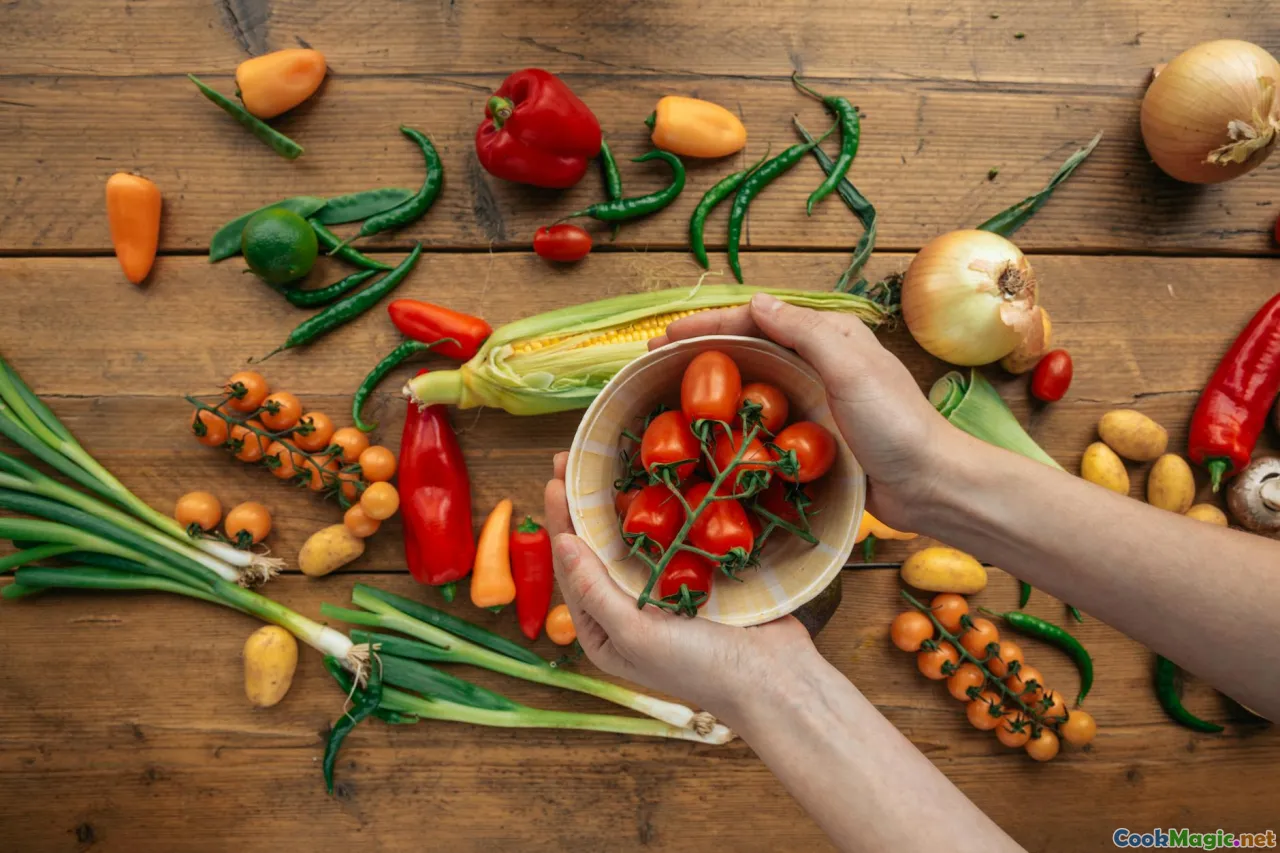
A proper Lowcountry boil is not a dump-and-pray endeavor. Each ingredient is chosen for what it brings to the party—flavor, texture, ballast—and for what it absorbs from the broth.
- Shrimp: Shell-on, ideally head-on if you can get them. Local white shrimp are sweet and plump in late summer and fall; brown shrimp in early summer have a firmer bite with a mineral edge. Ask your fishmonger for creek-caught if you’re in the Carolinas, or good-quality Gulf if you’re inland. Wild American shrimp are worth the premium for their clean ocean scent and springy texture. Figure about 1/2 pound per person for an average crowd, more if you’re feeding shrimp-first people.
- Corn: Peak-season ears, milk-sweet and heavy in your hand, cut into halves or thirds. The kernels soak up spice like sunshine in a field. Off-season, frozen cobettes can work, but the chew won’t sing the same song.
- Potatoes: Small red potatoes hold their shape and keep a creamy center. Marble-sized new potatoes, skins intact, are perfect; Yukon Golds work if you cut them into golf-ball pieces. Allow 2–3 per person, depending on size.
- Smoked sausage: The choice is where family politics get involved. Andouille brings punch and smoke; kielbasa offers soft garlic warmth; a lean beef sausage changes the mouthfeel entirely. I lean toward a snappy local smoked pork sausage with a clean snap and paprika-whispered fat. A quarter to a third pound per person does well.
- Aromatics and accents: Lemon halves squeezed and tossed in; a head or two of garlic split crosswise; halved onions; bay leaves; fresh parsley for the finish. Some cooks add small sweet onions or wedges of cabbage to drink up the liquor. All of them tell a different part of the same story.
If you want to gild the lily, blue crabs make a beautiful seasonal guest star. In late summer, when the creeks are peppered with skittering crabs, a few dozen cleaned halves in the pot turn a shrimp boil into a feast that smells like a dock at low tide. Mussels and clams are less traditional in the Lowcountry than in New England, but coastal kitchens are pragmatic—if the shellfish is good and plentiful, it belongs.
The Seasoning Debates: Old Bay, Zatarain’s, or Your Own

Every Lowcountry cook carries a stance on seasoning the way a pitmaster carries a secret rub. The three main camps:
- Old Bay loyalists: Born of the Chesapeake but beloved across the South, Old Bay brings celery seed, paprika, mustard, and a gentle heat. It is herbaceous and familiar. The scent flicks on a memory switch.
- Zatarain’s diehards: The New Orleans crab boil concentrates—liquid and sachets—lean hotter, heavier on clove and allspice, with citrus brightness. It makes a punchier broth and a more perfumed steam. Many Lowcountry kitchens use Zatarain’s bags for the background and finesse the rest.
- Homemade evangelists: Equal parts chef and storyteller, these cooks toast coriander, mustard seed, and peppercorns, grind them with bay, paprika, cayenne, and dried lemon peel, and stir in sea salt from Bulls Bay. The result is tailored to the shrimp at hand.
Here’s the seasoning approach that’s earned its place on my deck in Charleston:
- 3 gallons water
- 2 bottles of crisp lager or kölsch (local pick: Holy City Pilsner from North Charleston)
- 3–4 tablespoons kosher salt
- 1/2 cup Old Bay
- 2 Zatarain’s crab boil sachets or 3 tablespoons liquid crab boil
- 2 lemons, halved, squeezed into the pot and tossed in
- 2 heads garlic, halved crosswise
- 2 onions, halved
- 8 bay leaves
- 1 tablespoon whole black peppercorns
- Optional: a tablespoon of coriander seed and a few sprigs of thyme for an herbal lift
Bring that mixture to a hard simmer and let it talk to itself for 10–15 minutes before you drop a single potato. The kitchen will smell like a dockside kitchen and a summer garden got married.
Gear That Gets It Right: Pots, Burners, and Baskets

Southern entertaining is often an exercise in ease masked by competence. The right gear lets you relax into the afternoon.
- Pot: For parties of 8–14, a 36–44-quart aluminum stockpot with a perforated basket insert is your friend. Bayou Classic makes a workhorse set that shows up at church fish fries throughout the Lowcountry. If you’re cooking for a couple dozen folks, bump up to 60 quarts.
- Heat: A propane burner keeps the boil outdoors and the kitchen cool. A backyard burner with a sturdy base and a regulator that doesn’t sputter is worth the investment.
- Tools: Long tongs, a spider skimmer, heavy mitts, and a sheet pan or two for staging. If you like a neat finish, pull out a hotel pan to catch the boil when you drain the basket.
- Table: Food-safe butcher paper rolled right over folding tables is the safer modern answer to newspaper, which can leach ink; it tears beautifully and invites doodling. Scatter bowls for shells, pitchers of water for rinsing hands, and a bucket or two for compostable scraps.
- Lighting and sound: String lights for when the conversation runs past dusk, a speaker for a beach-music playlist—Chairmen of the Board, a little Motown, a little Carolina shag.
If you’re indoors, a pair of large Dutch ovens can tag-team the job in batches. Park a colander in the sink to drain the hot broth, but take it slow; steam burns are the quickest way to uninvited drama.
Timing Is Everything: A Step-by-Step That Never Fails
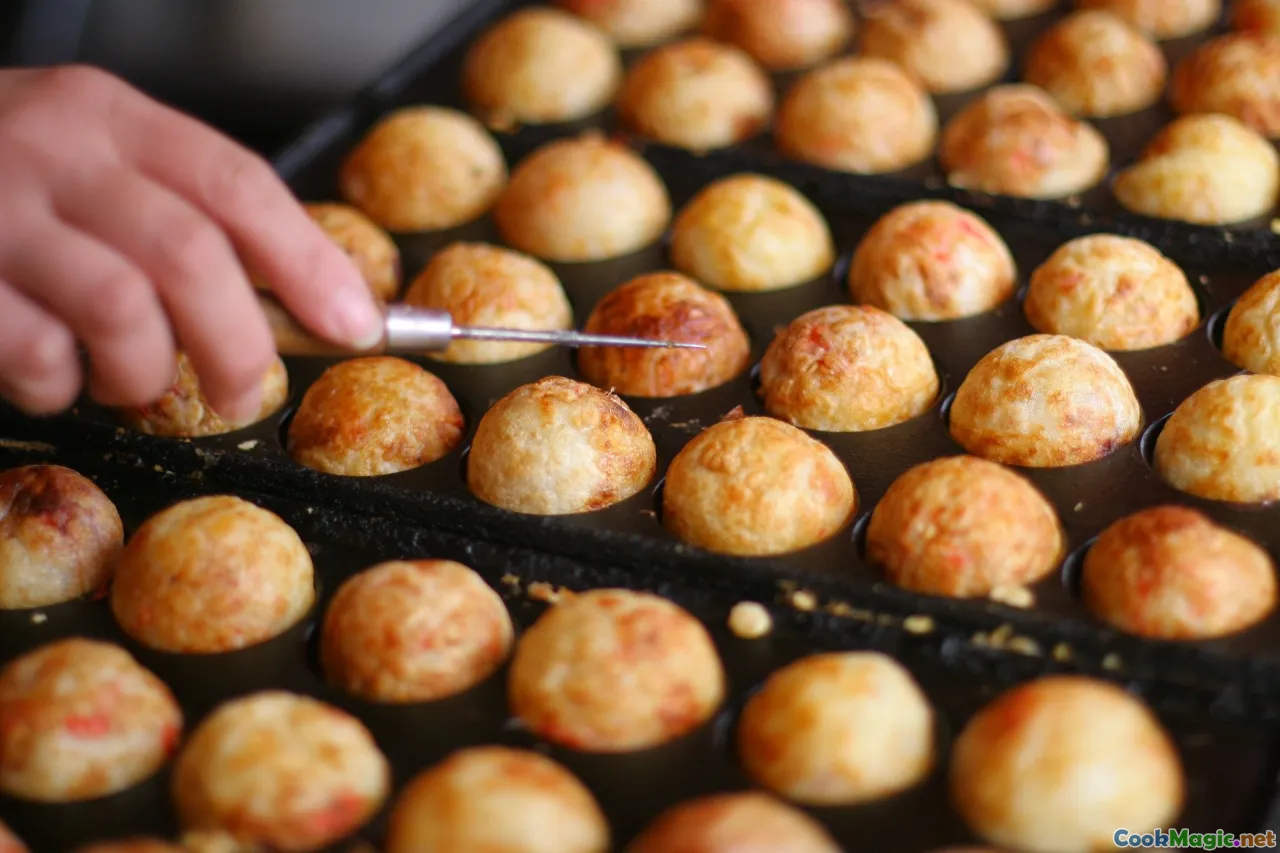
Texture is the soul of a good boil. Potatoes should yield but not crumble, corn should pop, sausage should bite, and shrimp should snap. Here is a rhythm that respects each ingredient.
- Build the bath
- Combine water, beer, salt, spices, lemons, garlic, onions, and bay. Bring to a lively boil. Simmer 10–15 minutes to infuse.
- Potatoes first
- Add small red potatoes. Boil 10–12 minutes, until a knife slides in with slight resistance. If they are larger than a ping-pong ball, give them another 2–3 minutes.
- Sausage next
- Tumble in sliced sausage (1-inch chunks). Cook 5 minutes. The fat will gloss the broth, and you will begin to get hungry.
- Corn joins the party
- Add corn pieces. Boil 5–7 minutes, until kernels are golden and plump. If you like a spicier finish on your corn and potatoes, cut the heat and let the pot soak for 10 minutes before the shrimp. (Do not soak with shrimp in there unless you like rubber bands.)
- Shrimp last, and lightly
- Return the broth to a boil, then add shrimp. Stir once. As soon as they blush from translucent gray to a uniform pink and curl into a loose C—about 2 minutes—cut the heat. Let them finish in the residual bloom of heat for 1 minute. If they curl into tight O’s, you’ve gone too far.
- Drain and dress
- Lift the perforated basket; let the broth rain off for a moment. Slide the boil onto a papered table. Dot with pats of butter that melt on contact, shower with chopped parsley and an extra sprinkle of Old Bay. Set out lemon wedges, hot sauce, and sauce bowls. Then stand back.
For crowd management, cooking in two passes keeps the first batch snapping while the second cooks. The broth will only get better.
Proportions and Planning: How Much for How Many
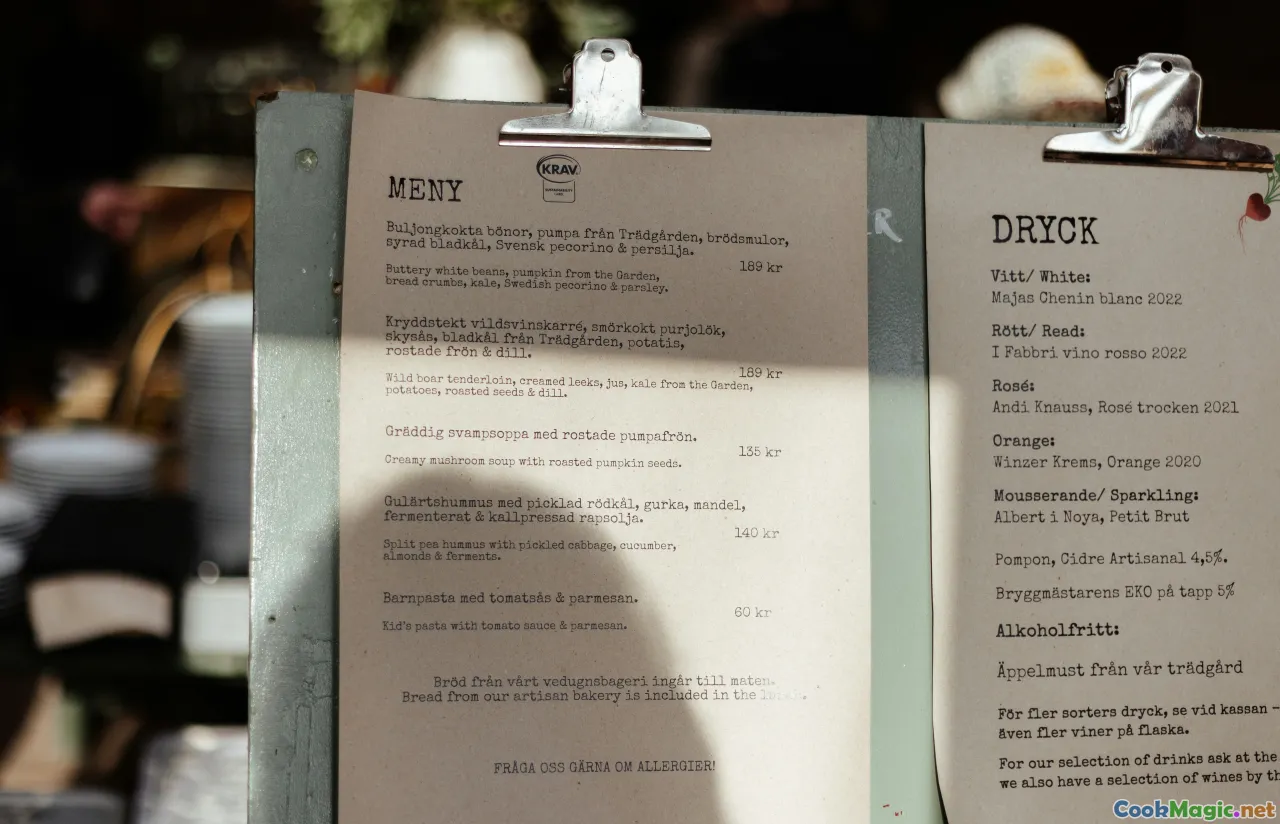
A boil is generous by design, but precise planning keeps you from running out in the first twenty minutes or hauling a fridge full of leftovers to bed.
Per person, plan:
- Shrimp: 1/2 pound shell-on (3/4 pound for hearty eaters or shrimp-forward crowds)
- Sausage: 1/4 to 1/3 pound
- Potatoes: 2–3 small red potatoes or about 1/3 pound
- Corn: 1 ear, cut into halves or thirds (so each person gets two pieces)
- Broth: Enough to cover, roughly 1 quart per person in the pot, though much of it won’t be consumed
For 12 people:
- 6–9 pounds shrimp
- 3–4 pounds smoked sausage
- 4 pounds small red potatoes
- 12 ears of corn
- A 40-quart pot, 3 gallons of seasoned water plus two beers
Add a simple slaw, sliced tomatoes and Dukes-dressed cucumbers, and a pan of buttermilk cornbread or a big basket of soft rolls to sop up the juices.
Regional Cousins: How Lowcountry Boil Compares
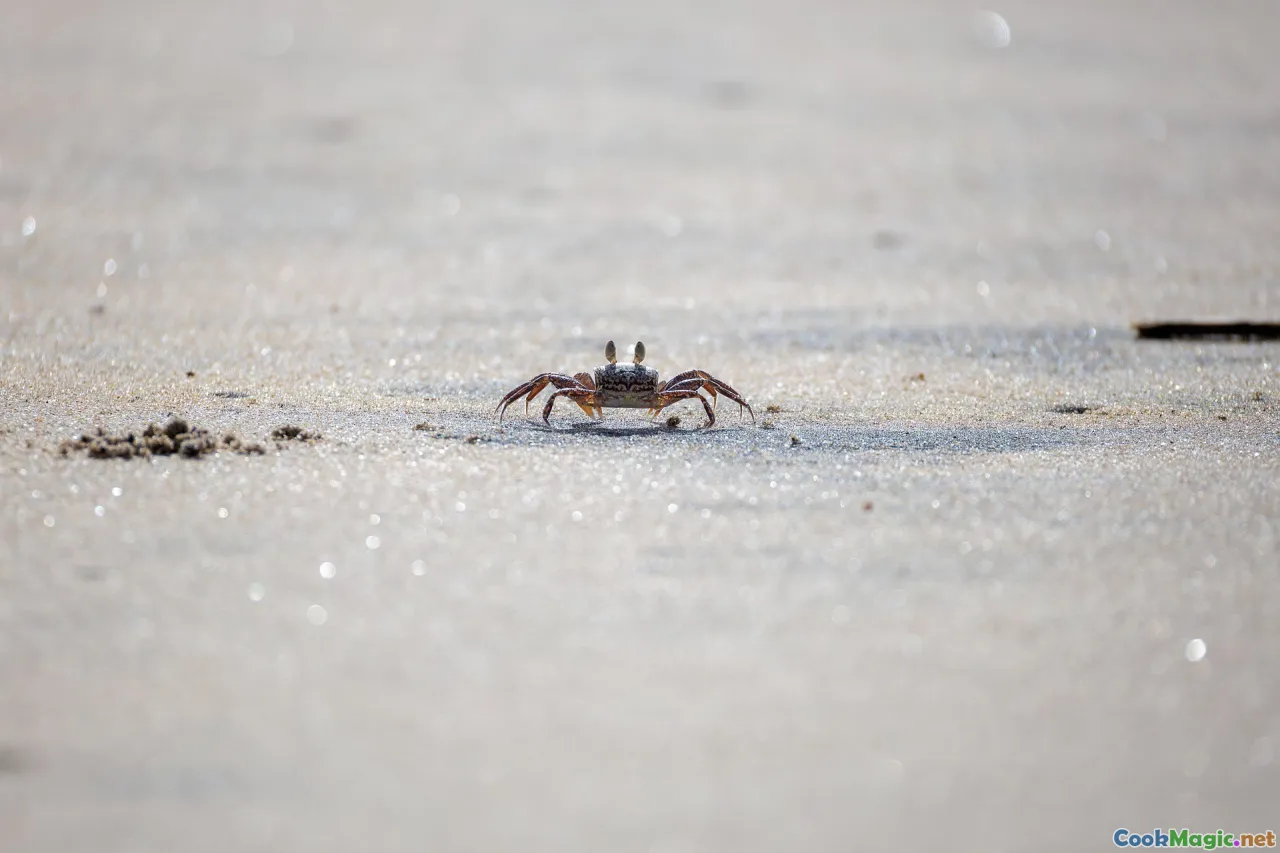
Part of the fun is seeing yourself in your neighbors and then arguing lovingly about the differences.
- Cajun crawfish boil (Louisiana): Crawfish are purged, then boiled hard in a spiked broth with a steeped soak so the tails pull in heat and salt. Add-ins are wild—mushrooms, artichokes, whole heads of garlic, sausage, even oranges. The spice is assertive, the citrus loud, and the social scene similar: everything piled high, everything eaten with fingers. Shrimp often get a soak too in Louisiana, but in the Lowcountry we keep shrimp quick for tenderness.
- Chesapeake crab feast (Maryland): Whole blue crabs steamed under a mountain of seasoning (Old Bay or JO No. 2) with vinegar, beer, and water. Instead of a boil, the steam coaxes sweet meat from shell. The table is mallets, paper, and vinegar cups. It is less about broth and more about pick-and-savor. Lowcountry folks will happily sit with mallets, but the sensory profile is different: sharper vinegar notes, the paprika-celery high tide of Old Bay.
- New England clambake (Northeast): A sandpit, hot stones, seaweed, steam, and a gentle perfume. Lobster, clams, mussels, corn, and potatoes are layered with ocean grass. The result is briny and subtler, kissed by smoke. It is a ceremony of tides. The Lowcountry boil is saucier, louder, red with paprika and dotted with sausage fat.
Each is a community’s answer to the same question: how do we eat what the water gives us together, with minimum fuss and maximum joy?
The Table Ritual: Newspaper, Butcher Paper, and Blessings
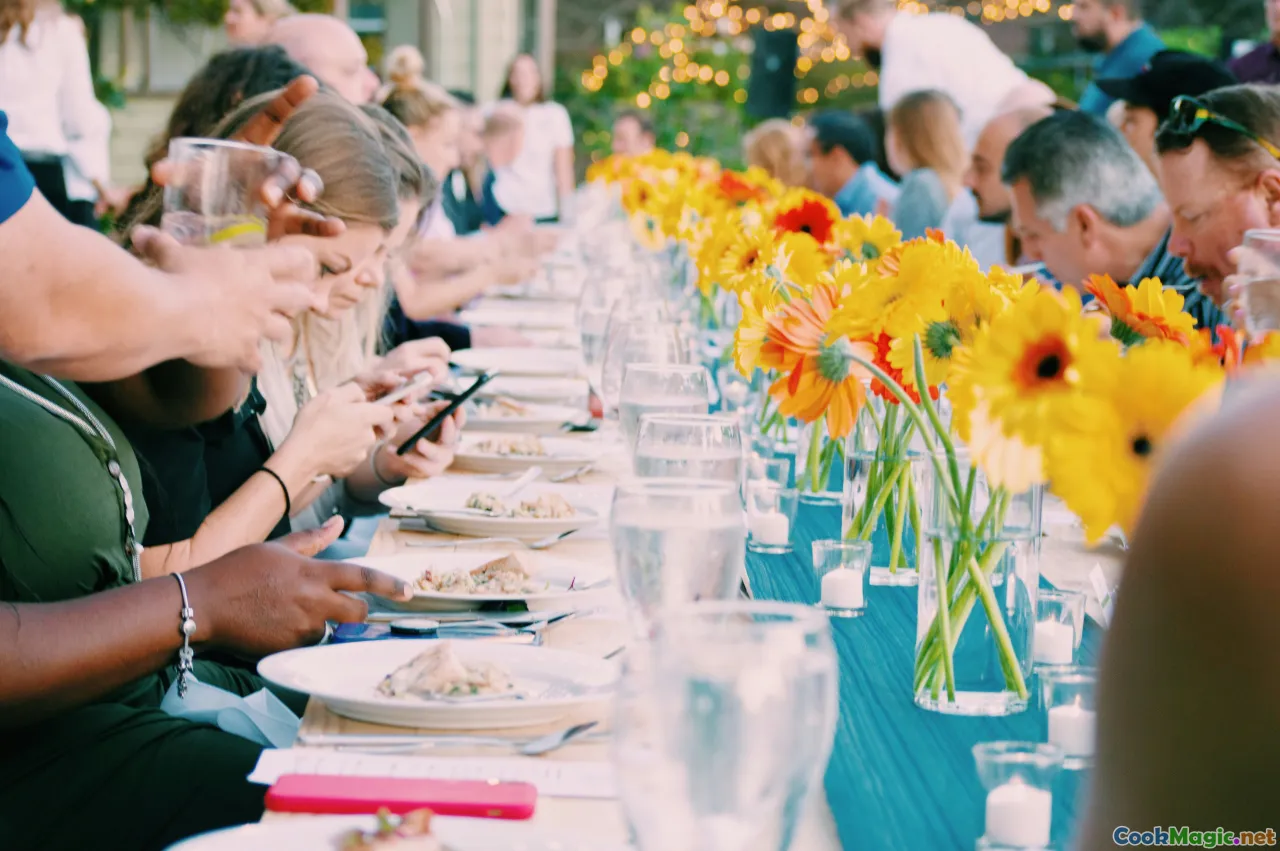
The best part of a boil isn’t in the pot. It’s at the table.
We roll out butcher paper like a fresh sheet of summer. Someone shakes out a basket of shells to make room. Another person squeezes a lemon wedge into a palm and rubs it over fingers to cut the shrimp smell. A kid sneaks a potato and goes yelping because he forgot about steam. Handshakes become hugs. Strangers become not-strangers by the second ear of corn.
I learned early on to keep napkins plentiful and bloom bowls within reach: a big bowl of warm water with lemon slices and a pinch of baking soda makes a fine hand rinse. Line galvanized pails with paper bags for shells, and empty them often. Keep a platter of sliced watermelon within reach to cool the heat—sweetness always follows spice in Southern kitchens. If someone says a blessing over the food, it’s usually short and grateful: for shrimpers safe on the water, for the creek that feeds us, for this unpretentious abundance.
If you want to do it up, garnish the heap with clusters of benne wafers balanced between corn and sausage—those sesame-studded cookies have been baked in Charleston kitchens since the 18th century and add a toasty whisper to the table talk. Or tuck sprigs of bay and parsley around the edges like a green crown.
Drinks, Sauces, and Sides That Sing
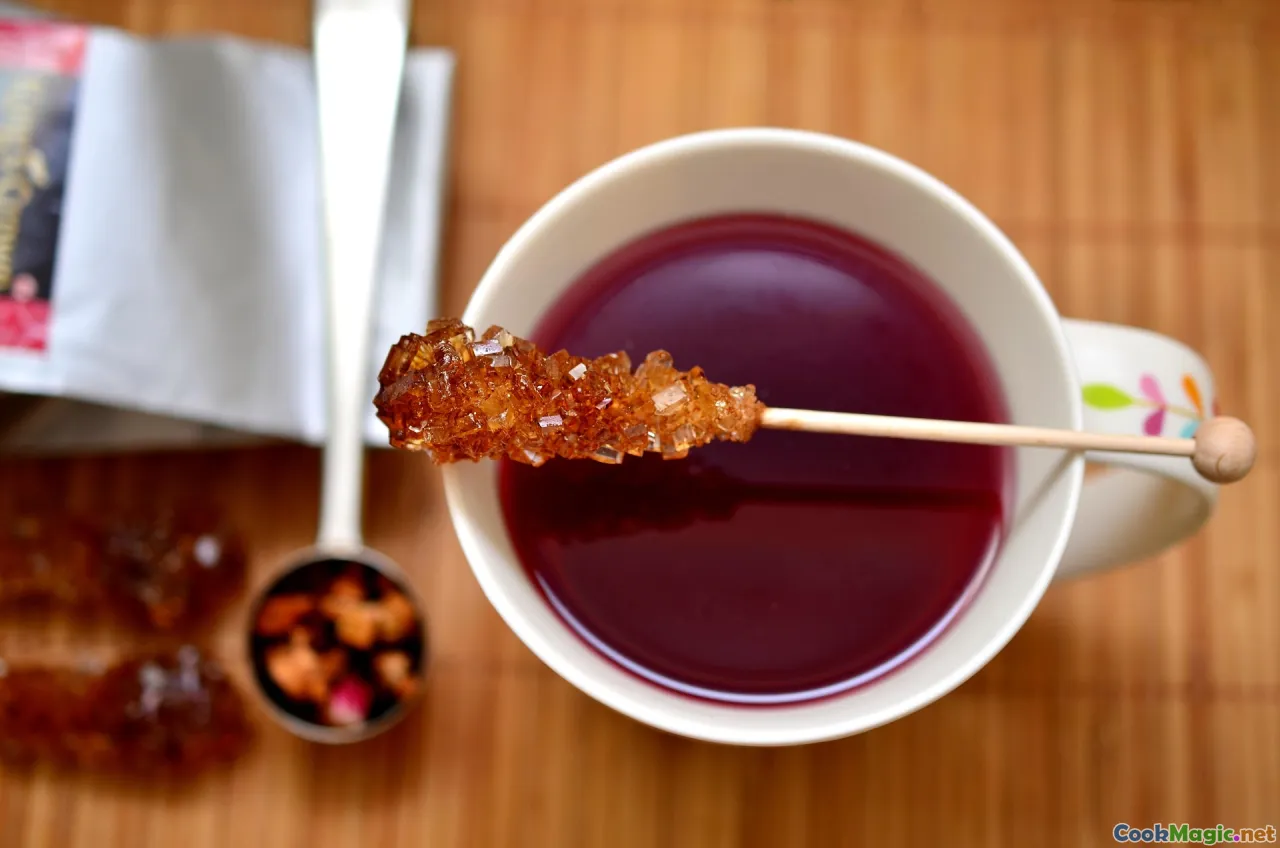
You don’t need much beyond the boil itself, but the right companions make it feel like a town festival came to your yard.
- Drinks: Pitchers of sweet tea with lemon wheels and plenty of ice. A cooler of crisp beers: pilsners, kölsches, pale lagers, or a snappy pils from a local brewery. For wine, a dry rosé with energy or a Vinho Verde with a faint spritz. If you prefer spirits, a light rum punch with grated nutmeg nods to Charleston’s historic punch bowls, but keep it easy—people will be eating with their hands.
- Sauces: Two bowls are nonnegotiable in my house. Cocktail sauce sharpened with grated fresh horseradish and a squeeze of lemon, and a Carolina remoulade punched up with capers, Creole mustard, and a whisper of hot sauce. Warm drawn butter with lemon is indulgent over crab if you have it. Bottles of Crystal, Texas Pete, and Tabasco keep the peace.
- Sides: A vinegar-slicked slaw with shaved cabbage and green onion feels right, especially if the boil runs rich. Tomato pie—a Lowcountry summer specialty with ripe tomatoes, biscuit crust, and a mayonnaise-cheddar cap—makes people go quiet. Sliced cucumbers in cider vinegar with cracked black pepper reset the palate between bites. For dessert, peach cobbler or a Huguenot torte (Charleston’s apple-pecan version of a pudding cake) closes the circle.
Sourcing With Soul: Shrimpers, Seasons, and Responsibility

A Lowcountry boil is only as good as the shrimp it celebrates. Buying well is an act of respect.
- Local first: If you’re near the coast, buy from a dock or a market that sells day-boat catch. In Mount Pleasant, the Wando dock and Shem Creek are lined with boats selling head-on shrimp in season. In Beaufort, Gay Fish Company has supplied families and restaurants since the 1940s. Inland, look for markets that label species and origin: wild American white shrimp, brown shrimp, or pink Gulf shrimp.
- Seasonality: In South Carolina, brown shrimp peak in early summer; white shrimp hit their stride late summer into fall. Spring brings roe shrimp—females carrying eggs; many cooks avoid buying roe shrimp to preserve the next generation. Ask your fishmonger what’s running and what’s responsible to buy.
- Frozen isn’t failure: High-quality, headless, individually quick-frozen (IQF) Gulf shrimp are a reliable option if you’re landlocked or out of season. Thaw gently in the fridge; don’t rush it in warm water.
- Ethics: Imported farmed shrimp can be problematic due to antibiotics and labor concerns. If you must buy imported, seek third-party certifications and ask questions. Supporting local shrimpers keeps the boats on the water and the creeks lively.
Keep shrimp on ice in a colander set over a bowl so meltwater drains away, and plan to cook them within a day of purchase. Fresh shrimp should smell like the sea at slack tide, not like ammonia.
Troubleshooting the Boil: Common Pitfalls and How to Fix Them
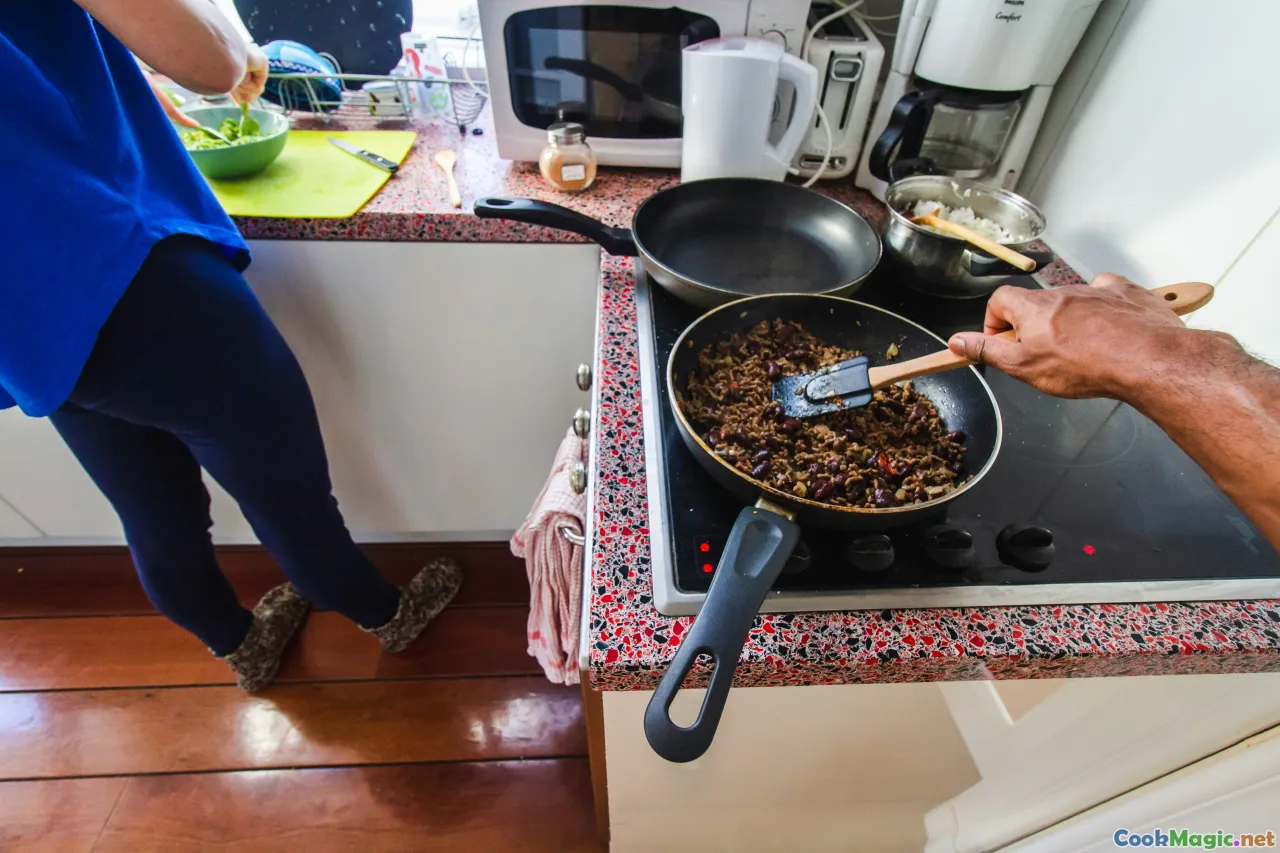
- Mushy shrimp: You’ve overcooked. Next time, reduce the shrimp time to 90 seconds and finish off-heat. If you’re cooking in batches, don’t leave cooked shrimp in hot broth—drain immediately.
- Blah potatoes: You didn’t salt the broth enough or you rushed the soak. Potatoes need time in seasoned liquid. Taste the broth before you add anything; it should be saltier than you think, like a well-seasoned soup.
- Corn that tastes raw: Corn needs a full 5–7 minutes at a lively simmer. If your pot is overcrowded, the boil drops to a lazy burble. Give the pot room to maintain heat.
- Too spicy or not spicy enough: Spice levels are deeply personal. A good practice is to build moderate heat in the pot, then set out hot sauces so people can choose their own adventure. For a spicier finish without overcooking shrimp, soak the potatoes and corn off-heat for 10–15 minutes before the shrimp go in.
- Soggy sausage: Add sausage later, not with the potatoes. Fatty sausage can leach too much if overcooked, leaving flabby rounds. A 5-minute bath is enough.
- Everything sticks: Aluminum pots can grab if the heat is too fierce and the liquid too low. Keep the broth level above the solids and stir gently after each addition.
Dietary Adaptations Without Losing the Soul
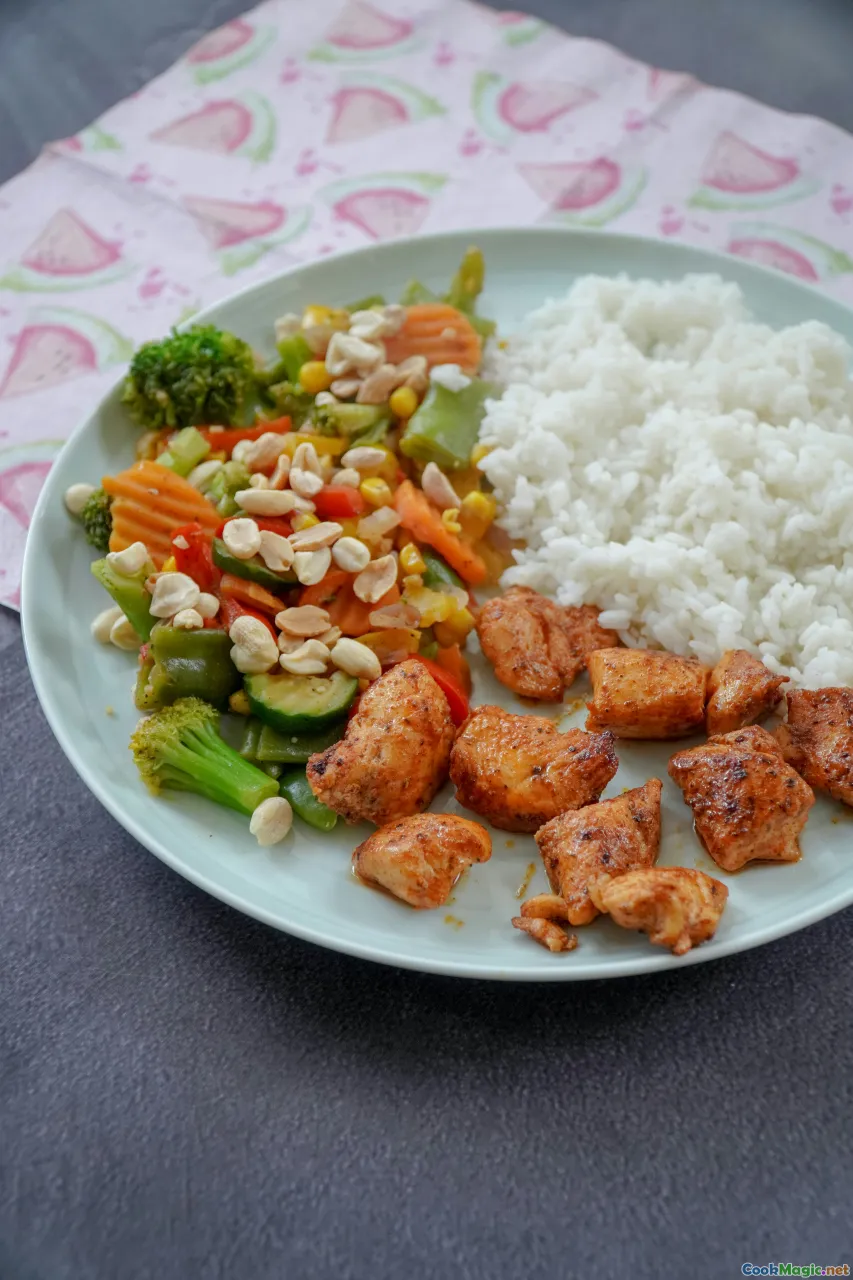
A Lowcountry boil is about welcome. With a few tweaks, you can keep the spirit alive for everyone.
- Pork-free: Use a smoked turkey sausage or chicken sausage. To replace the smoky bass note, add a teaspoon of smoked paprika to the broth.
- Pescatarian: Skip the sausage entirely and add mussels or clams for bulk. Increase the Old Bay a touch and finish with olive oil and parsley for richness.
- Shellfish allergies: Try a Lowcountry field boil with corn, potatoes, smoked sausage, and green beans, all cooked in seasoned broth. Serve with remoulade and pickles. It won’t be the same, but it will still be a happy table.
- Vegetarian: Lean on mushrooms—thick-sliced king oysters or portobellos—plus small new potatoes, corn, wedges of cabbage, and smoked tofu for chew. Boost umami in the broth with kombu and a splash of soy or tamari, and use smoked paprika for that campfire hint.
- Gluten-free: Most boils are naturally gluten-free, but check sausage labels and seasoning blends. Some crab boil concentrates can include wheat-derived carriers.
Leftovers That Taste Like a Second Party
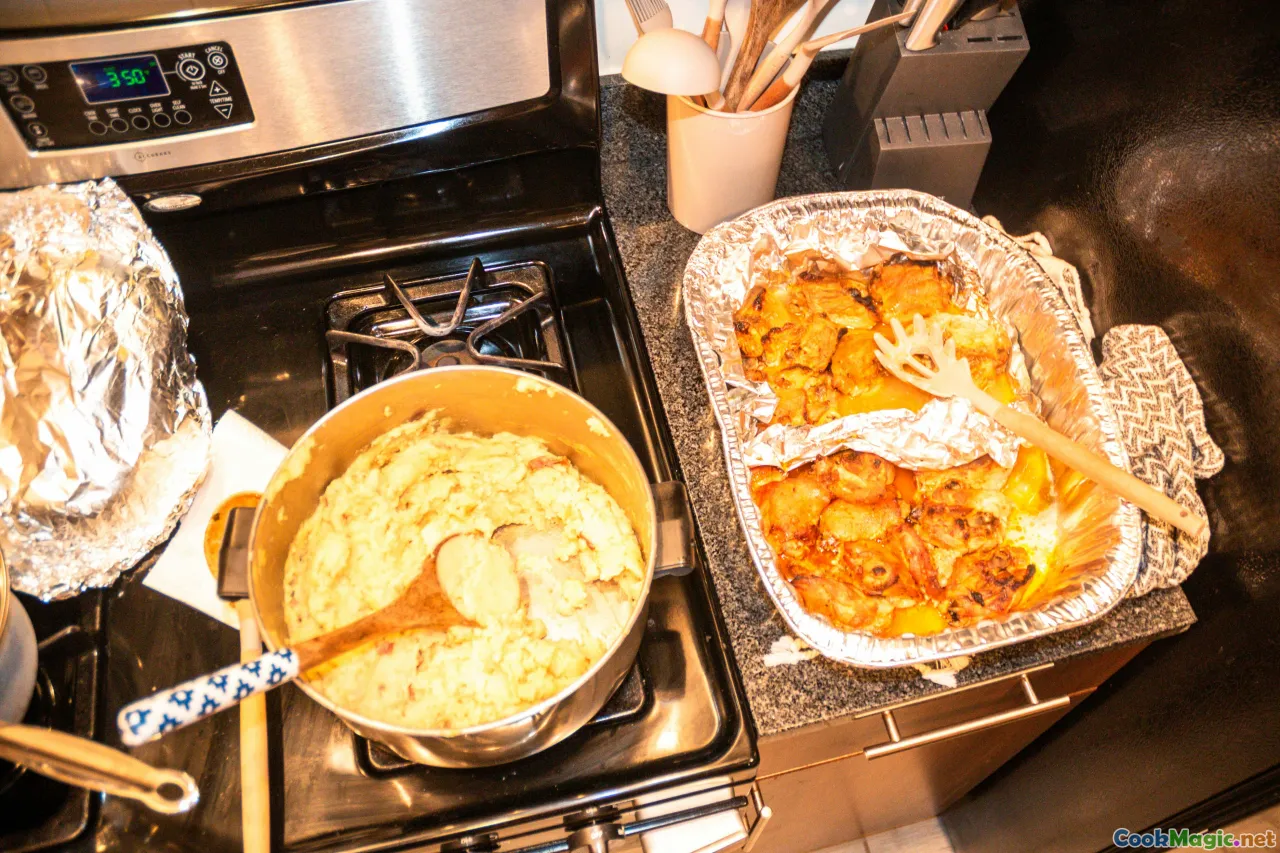
If you have any leftovers—and I gloriously try to—tomorrow’s lunch is waiting.
- Shrimp-corn chowder: Simmer shrimp shells with onion, celery, and bay for 30 minutes to build a quick stock. Add diced leftover potatoes and cut corn kernels to the strained stock, thicken with a touch of cream, and finish with chopped shrimp warmed just until pink. Garnish with chives and a crack of pepper.
- Lowcountry hash: Rough-chop potatoes and sausage, sear in a cast-iron skillet with a little butter until the edges get ruffled and crisp, then fold in corn and a handful of chopped shrimp in the last minute. Fry eggs on top. Hot sauce on the side.
- Shrimp salad rolls: Chop chilled shrimp and toss with lemony mayonnaise, celery, dill, and a sprinkle of Old Bay. Pile into toasted split-top buns with shredded lettuce. It’s a Southern wink at a lobster roll.
- Boil rice bowls: Spoon hot rice (Carolina Gold if you have it) into bowls, top with warmed leftovers and a spoonful of remoulade or a squeeze of lemon. Parsley and scallion confetti make it feel fresh again.
Leftovers keep well for up to two days; shrimp are delicate, so keep them cold and reheat gently.
A Story From the Creek: The Boil That Bound Us
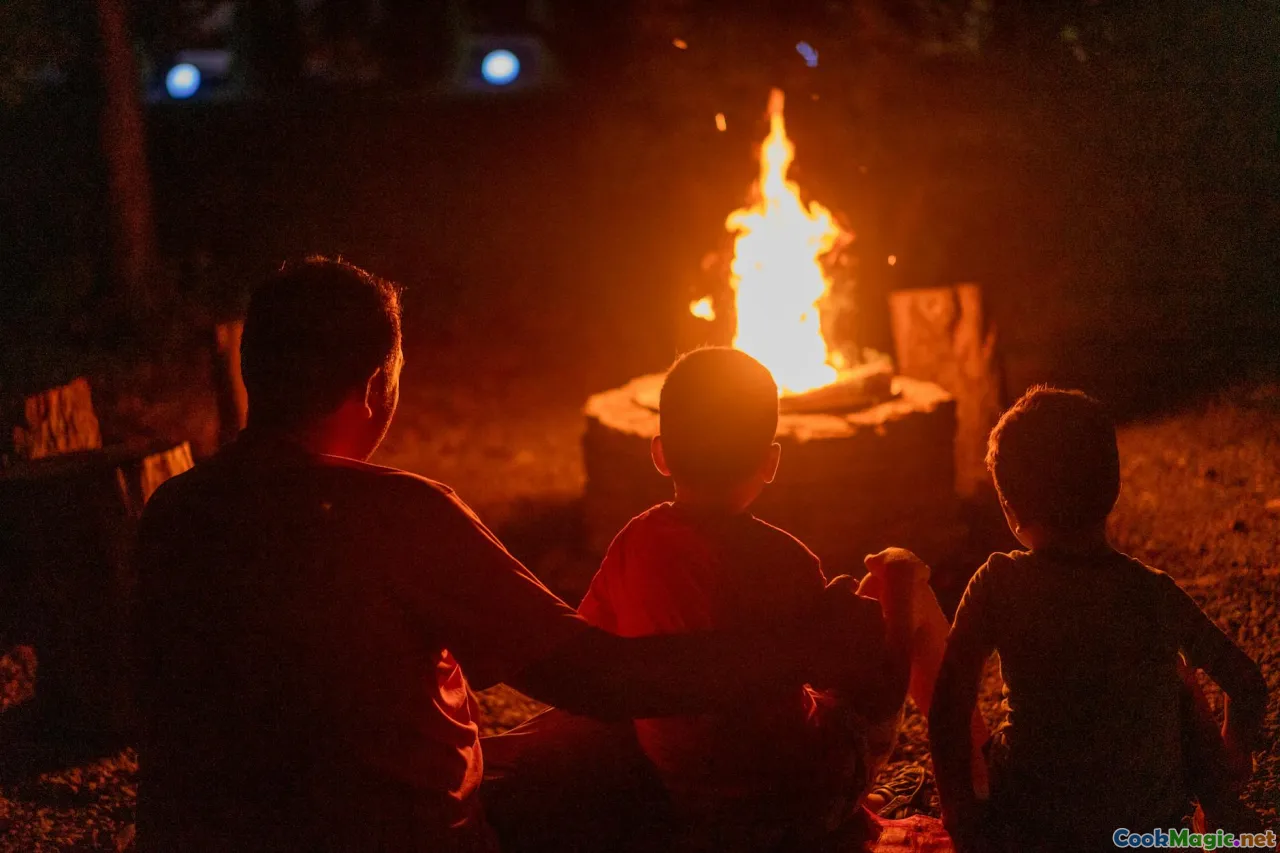
On Edisto Island, the marsh breathes twice a day, filling and emptying through a lacework of creeks so narrow you could cast a net across them with a polite cough. One August, we spent a week in a wooden house patched together out of memory and screened doors. Every afternoon the tide peeled back and left oysters glinting like coins in the mud. Every evening the sun set in a color you could taste—peach and copper, salt and sweet.
We met a shrimper on the dock whose forearms looked cut from ship rope. He sold us ten pounds of head-on shrimp from a cooler that smelled like a pledge. He said, You’ll want to cook these quick, and he was right. Back at the house, we set up the burner under a live oak that dripped with Spanish moss like a thousand miniature curtains. The children ran in loops, lemon in one hand, potato chip in the other. My aunt brought out a bowl of benne wafers and tried to hide them from the teenagers. Someone tuned the radio to beach music. Someone else cried out—first bite of corn, too hot.
We cooked by feel: the broth clouding with beer and bay, the potatoes breathing in salt, the sausage releasing fat that shone like shellac. When the shrimp rolled into pink, we let them rest one minute and then poured the whole pot onto a table that was nothing more than paper and a promise. I remember the sound—shells tapping the table, the hiss of butter meeting heat, the soft chorus of mmm that grew like a tide. There were quiets, too. The kind of soft pockets in a party when people realize they’ve been fed something basic and good, and it has called up every time they were fed this way before, and every time they want to be again.
After, we walked to the creek with bowls of shells. A great blue heron watched us from the bank, all angles and patience. We talked about nothing in particular—church fish fries where the line wraps twice around the fellowship hall; the Blessing of the Fleet in Mount Pleasant where boats parade past packed docks and a priest swings a thurible of incense that mingles with diesel and ocean; the way shrimp boats look like lullabies from far away. We slept that night with the windows open to the marsh and the smell of crab boil in our hair.
Hosting Notes: Little Touches That Make a Big Difference

- Invitations: Tell your guests to dress for steam and sunshine. Add a note: there will be spice, and there will be butter. If they have shellfish allergies, tell them you’re happy to make a field boil on the side.
- Setup flow: Put the drink station far from the cooking station so the cook doesn’t have to navigate a thirsty crowd with a pot of boiling broth. Shade for the cooks is a kindness.
- Pace: Start the pot 45 minutes before guests arrive so the first batch lands when people are ready. Keep bites out—pimento cheese and crackers, sliced okra pickles—so nobody hovers over the pot like a cartoon wolf.
- Music: Keep it light and coastal until the sun dips, then slip into slower beach music and soul. You are scoring a memory.
- Cleanup: Roll up the paper and most of your mess goes with it. Keep a hose handy for the deck; cornbread crumbs will fall where they may.
The Cultural Thread: Respecting the Hands That Made It Possible

A Lowcountry boil is not just a recipe; it’s a thread in a net of history. The Gullah Geechee people—descendants of West and Central Africans enslaved on coastal plantations—carried seed and technique across an ocean and built a cuisine that knows how to coax comfort and celebration from humble ingredients. Their presence on the sea islands is felt in the language of the markets, in rice that steams up separate and fragrant, in stews that stretch to feed a whole church.
Eating shrimp that was snatched from local creeks by boats with family names on their sides is an act with context. It helps keep working waterfronts alive in places where condo towers vie for the horizon. It supports fish houses like Gay Fish Company, Crosby’s Fish & Shrimp, and small-town docks that disappear if we are not careful. It honors the knowledge in the hands that mend nets, the hands that blend spices by feel, the hands that know when to cut the heat because the shrimp have told them so.
If you want to give back beyond buying local, consider visiting Gullah-owned businesses, hiring Gullah storytellers for tours of the islands, and donating to organizations that preserve the language and culture. A boil tastes better when it tastes like responsibility.
A Practical, Printable Recipe to Anchor You
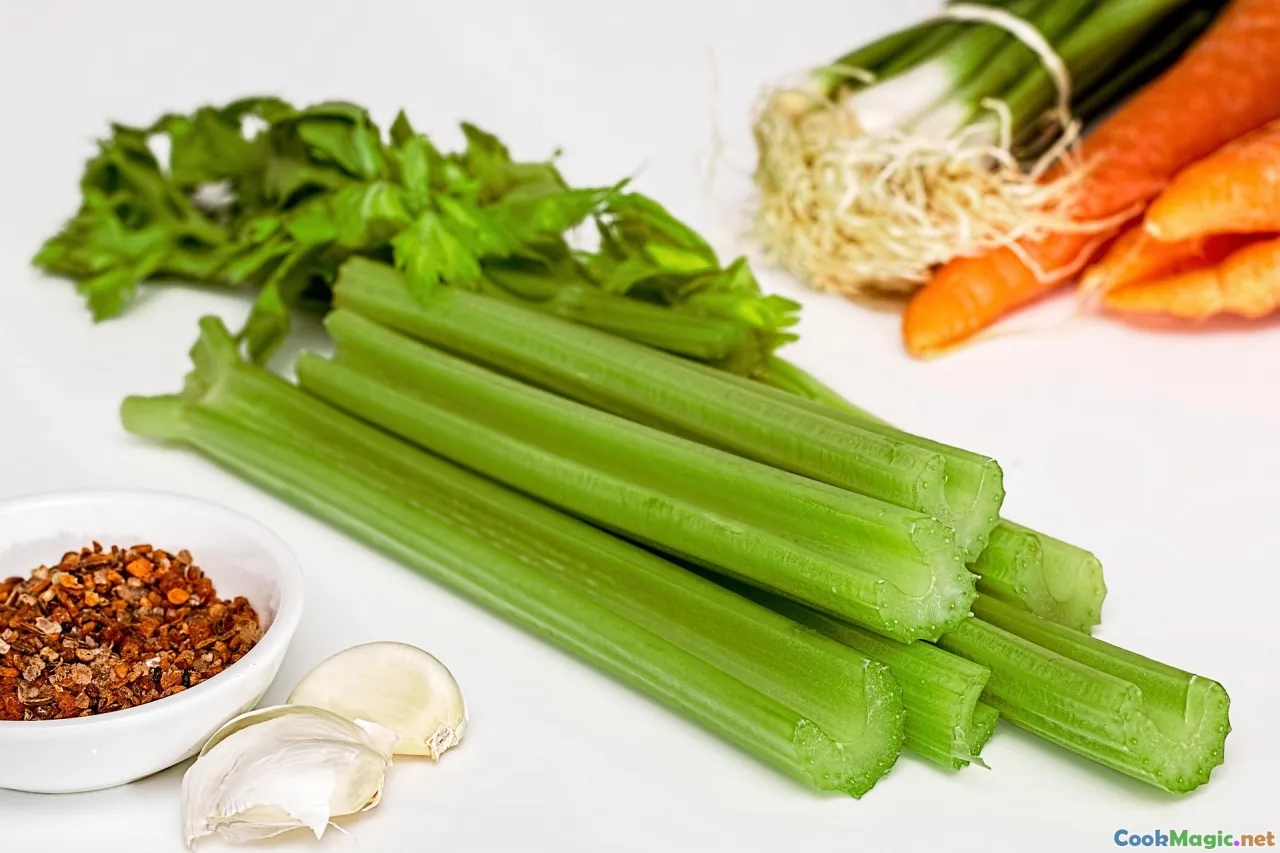
For 10–12 people:
Ingredients
- 6–8 pounds shell-on shrimp (preferably wild American)
- 12 ears corn, halved
- 4 pounds small red potatoes
- 3–4 pounds smoked sausage, cut into 1-inch rounds
- 3 gallons water
- 2 bottles lager or kölsch
- 3–4 tablespoons kosher salt
- 1/2 cup Old Bay seasoning
- 2 Zatarain’s crab boil sachets (or 3 tablespoons liquid crab boil)
- 2 lemons, halved and squeezed, halves added to pot
- 2 heads garlic, halved crosswise
- 2 onions, halved
- 8 bay leaves
- 1 tablespoon black peppercorns
- Optional: fresh parsley, additional Old Bay, butter for finish
Method
- Build the bath: Add water, beer, salt, Old Bay, crab boil, lemons, garlic, onions, bay leaves, peppercorns to a 40-quart pot. Bring to a boil; simmer 10–15 minutes.
- Potatoes: Add potatoes; boil 10–12 minutes until just tender.
- Sausage: Add sausage; cook 5 minutes.
- Corn: Add corn; cook 5–7 minutes. For extra seasoning, cut heat and soak 10 minutes.
- Shrimp: Return to a boil; add shrimp. Stir once; cook 2 minutes until pink and curled into loose C shapes. Cut heat; rest 1 minute.
- Serve: Drain and tumble onto a papered table. Dot with butter, sprinkle with parsley and Old Bay. Serve with lemon wedges, cocktail sauce, remoulade, and hot sauce.
Notes
- Taste the broth before adding anything and adjust salt and spice. The broth should taste energizing and a little salty.
- Keep a second pot of unseasoned water simmering if you need to temper spice for a few guests; dip their portion of corn and potatoes quickly to rinse surface heat.
Why We Keep Coming Back
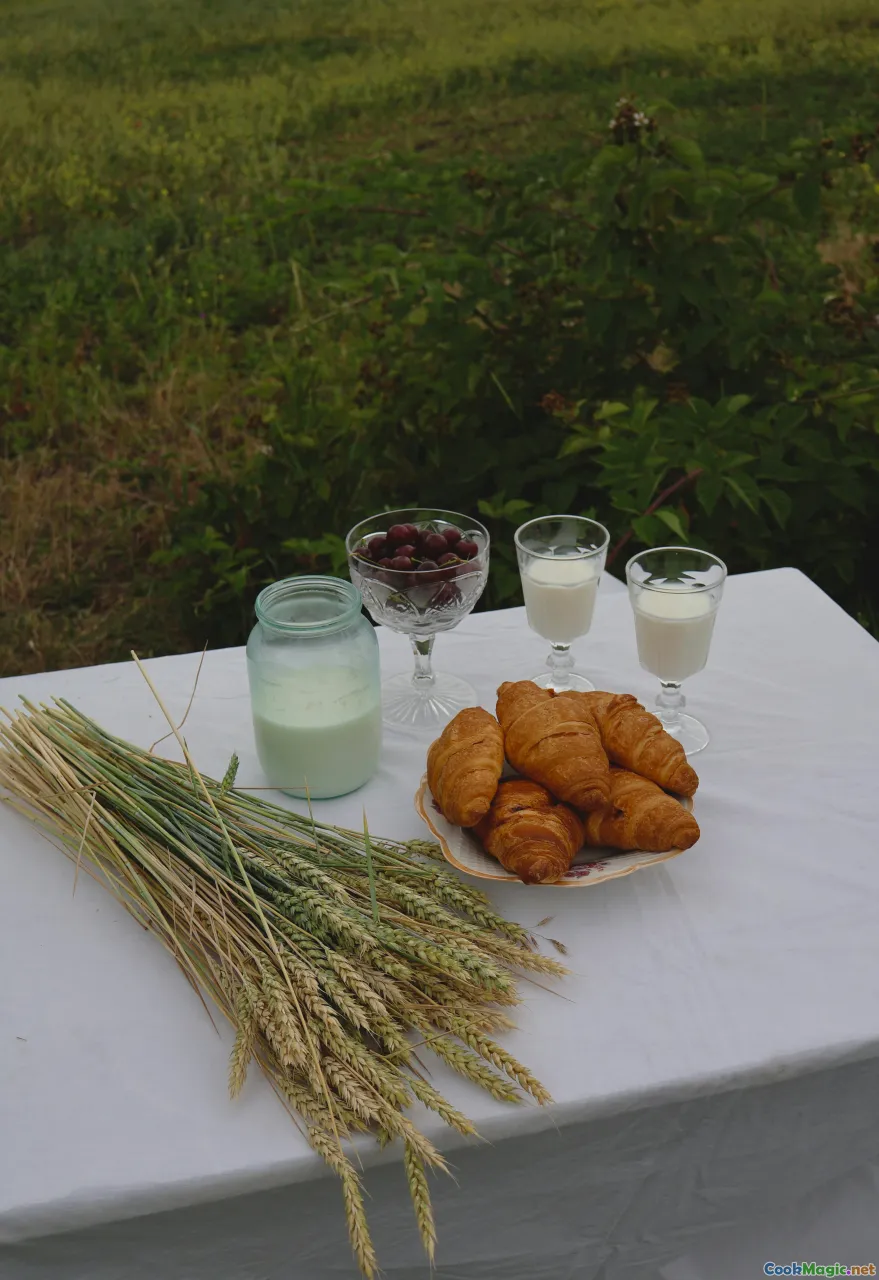
Lowcountry boils endure because they make the table easy to approach. There are no centerpieces to admire, no knives and forks to fuss over—just hands and shells and strangers who become familiar over a pile of shrimp. The flavors are high and bright: sweet corn milk dripping down fingers, sausage fat painting lips, potatoes sighing in their skins, shrimp that spring and surrender in a bite. The steam carries pepper to your eyes until you laugh, and then the butter soothes it away.
But there is also something underneath. This is a dish about tide and time and the trust that if we throw it all in together and stir with care, something pleasurable and sustaining will emerge. I have eaten Lowcountry boils in a church parking lot off Highway 17 where the mosquitoes had their own chorus, and on a condo balcony overlooking the harbor where gulls screamed for a share. The common denominator is always the crowd leaning in, the food piled high, the feeling that we did this together and we are, for a moment, exactly where we should be.
So pick a Saturday when the air is soft and the light comes in sideways. Go down to the dock and listen to the rigging clink. Bring home shrimp that smell like the promise of dinner. Invite more people than your chairs can hold. Set up the burner. Season the water. And when the pot blooms with steam and spice, when the shrimp blush and the corn comes up shining, pour it all out and let the evening happen to you. That is Lowcountry entertaining, and these are its essentials: good ingredients, faithful timing, and a table big enough for every hungry heart within earshot of the boil.









